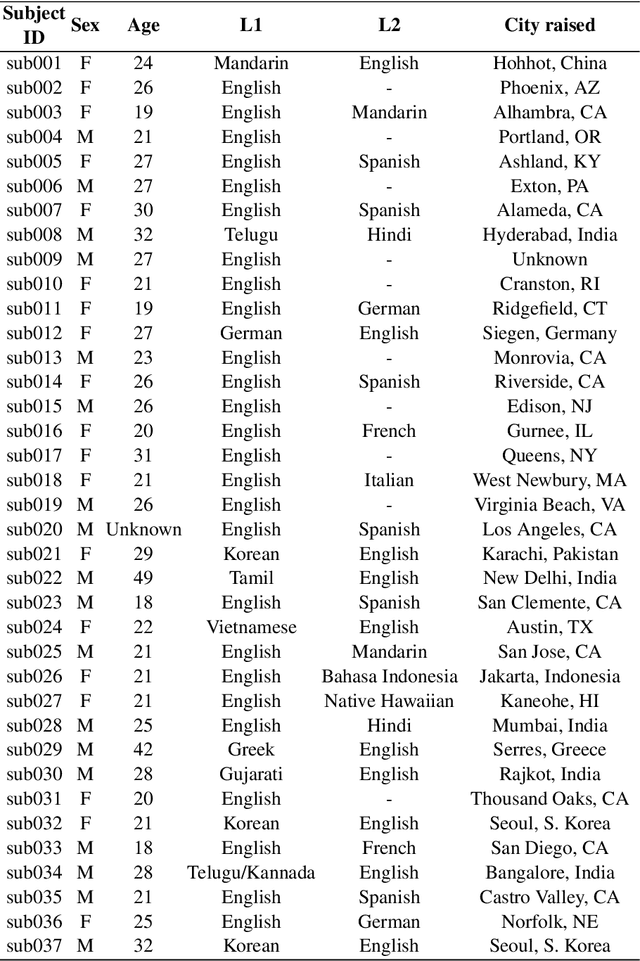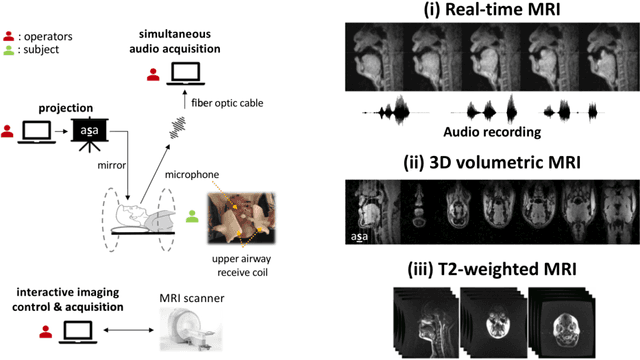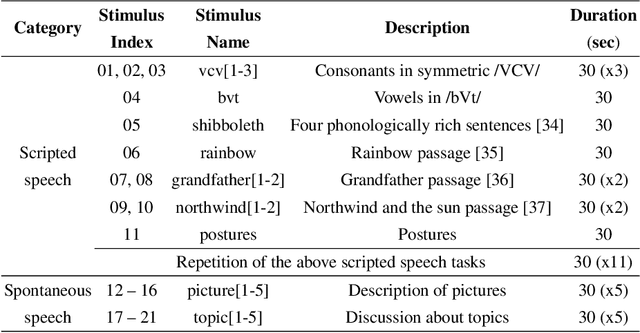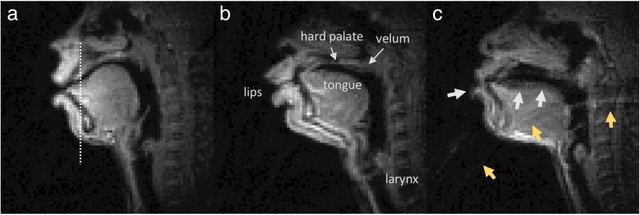Colin Vaz
Two-pass Endpoint Detection for Speech Recognition
Jan 17, 2024Abstract:Endpoint (EP) detection is a key component of far-field speech recognition systems that assist the user through voice commands. The endpoint detector has to trade-off between accuracy and latency, since waiting longer reduces the cases of users being cut-off early. We propose a novel two-pass solution for endpointing, where the utterance endpoint detected from a first pass endpointer is verified by a 2nd-pass model termed EP Arbitrator. Our method improves the trade-off between early cut-offs and latency over a baseline endpointer, as tested on datasets including voice-assistant transactional queries, conversational speech, and the public SLURP corpus. We demonstrate that our method shows improvements regardless of the first-pass EP model used.
Adaptive Endpointing with Deep Contextual Multi-armed Bandits
Mar 23, 2023Abstract:Current endpointing (EP) solutions learn in a supervised framework, which does not allow the model to incorporate feedback and improve in an online setting. Also, it is a common practice to utilize costly grid-search to find the best configuration for an endpointing model. In this paper, we aim to provide a solution for adaptive endpointing by proposing an efficient method for choosing an optimal endpointing configuration given utterance-level audio features in an online setting, while avoiding hyperparameter grid-search. Our method does not require ground truth labels, and only uses online learning from reward signals without requiring annotated labels. Specifically, we propose a deep contextual multi-armed bandit-based approach, which combines the representational power of neural networks with the action exploration behavior of Thompson modeling algorithms. We compare our approach to several baselines, and show that our deep bandit models also succeed in reducing early cutoff errors while maintaining low latency.
A multispeaker dataset of raw and reconstructed speech production real-time MRI video and 3D volumetric images
Feb 16, 2021



Abstract:Real-time magnetic resonance imaging (RT-MRI) of human speech production is enabling significant advances in speech science, linguistics, bio-inspired speech technology development, and clinical applications. Easy access to RT-MRI is however limited, and comprehensive datasets with broad access are needed to catalyze research across numerous domains. The imaging of the rapidly moving articulators and dynamic airway shaping during speech demands high spatio-temporal resolution and robust reconstruction methods. Further, while reconstructed images have been published, to-date there is no open dataset providing raw multi-coil RT-MRI data from an optimized speech production experimental setup. Such datasets could enable new and improved methods for dynamic image reconstruction, artifact correction, feature extraction, and direct extraction of linguistically-relevant biomarkers. The present dataset offers a unique corpus of 2D sagittal-view RT-MRI videos along with synchronized audio for 75 subjects performing linguistically motivated speech tasks, alongside the corresponding first-ever public domain raw RT-MRI data. The dataset also includes 3D volumetric vocal tract MRI during sustained speech sounds and high-resolution static anatomical T2-weighted upper airway MRI for each subject.
 Add to Chrome
Add to Chrome Add to Firefox
Add to Firefox Add to Edge
Add to Edge